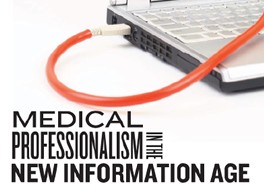Editors: David J. Rothman and David Blumenthal
Publisher: Rutgers University Press – 224 pages
Book Review by: Nano Khilnani
Living, in general, in today’s litigious world has become more stressful, more expensive, more demanding of time for doctors. At the same time, their potential liabilities have increased in number.
So the creation of electronic health records (EHRs) of patients which can be easily traceable through mobile devices, or online, can expose them to higher levels of potential damage of their reputations and greater liability, for their actions, or lack thereof.
With EHRs by doctors – more quickly and easily accessed than paper-based versions – there would be greater chances for them to be sued whether or not there was any willful wrong-doing or negligence involved on their part.
This also opens the possibility that medical malpractice insurance firms – because more online research and checking by their employees might be involved – may charge even higher premiums to doctors than today’s already very high rates, due to higher employee costs. This may in turn drive health insurance coverage costs still higher for companies, business owners, employees, families and individuals.
In every business or financial situation, a cost-benefit analysis is a prudent means to arriving at a decision. In this particular instance – where a doctor’s desire to more easily locate a patient’s information electronically has to be weighed against the investment in new equipment and its periodic servicing cost – the decision is not an easy “yes-no” one.
Why? Because of another factor: time. Doctors want to save time, since time is money. If they are already so pressed by non-income-producing demands on their time (such as compliance or reimbursement issues for example) they would want to save that precious commodity by not having to answer questions posed to them by patients viewing their diagnoses, prescriptions and treatments online.
Also, keeping EHRs may subject them to have to go to court to answer questions relating to a suit brought upon them by one or more of their patients. Whether there is any merit in the cases or not, subjecting them to prepare to go to court to justify a medical decision or action can be very disruptive to their practice and can thereby cause them loss of income.
So potential higher liability and loss of precious time would be enough reasons for doctors to avoid the switch to electronic record-keeping, opting instead to continue to keep clean, easily-locatable (color-coded for example) paper-based records of patients.
In this book, David J. Rothman, president of the Institute on Medicine as a Profession (IMAP) and David Blumenthal, a national coordinator for health information technology (now commonly referred to as HIT) at the Federal government’s Department of Health and Human Services, discuss the positive benefits as well as the negative implications of greater use of electronic medical information.
The different aspects of HIT and its effects on medical professionals are discussed in eight chapters. Here is an overview of content in some of those chapters. We urge you to get the book to get detailed information found in not only the chapters we touch upon below but also to thoroughly read the other chapters.
The first chapter, Expecting the Unexpected, deals with the expected as well as the unexpected outcomes of added use of information technology in medicine. “Physicians are at once excited and in dread of the (new) technology,” write the authors.
With information on their personal medical records readily available on a website, is it subject to misinterpretation by their patients, and will they jump to wrong conclusions about their condition? Will this information be passed on by patients to other doctors to get a second opinion? These remain open questions.
Quality Regulation in the Information Age, is the title of the second chapter. Developments such as ‘provider report cards’ and ‘pay-for-performance’ programs by state governments have raised concerns (and even outrage) among physicians, who assert that bureaucrats who have no knowledge and no training in medicine are dictating arbitrary standards to them.
The Information Rx – the title of the third chapter – relates to readers the foray into the medical field by Zagat Survey LLC, which ranks restaurants based on diners’ experiences. With the health insurance firm WellPoint Inc., Zagat began in January 2008 to rank doctors on a 30-point scale with patient satisfaction surveys done online. There were four criteria used in gathering responses online: trust, communication, availability and office environments in doctors’ offices.
But Zagat’s attempt to rate doctors in a similar fashion as restaurants elicited amused and skeptical reactions by doctors. One of them wrote: “the time is coming when you can pick up the ‘burgundy bible’ to find the best restaurant in town, and then search a similar guide to find a gastroenterologist to treat the possible stomach ache afterwards.”
But seriously, James King, president of the American College of Family Physicians, warned that “choosing a physician only according to consumer ratings can deprive patients of high quality medical care, particularly if those ratings are based on unrecognized and unvoiced anger or unjustified allegiance.”
There is much new information in this book on the emerging field of medical information technology, and we applaud the authors for their pioneering work in presenting their findings as well as those of a dozen or so other contributors to this valuable effort.







